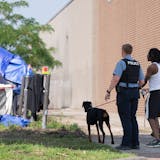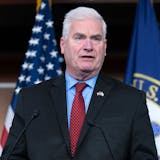Opinion editor’s note: Strib Voices publishes a mix of commentary online and in print each day. To contribute, click here.
•••
Sarah Loudon has been a U.S. Air Force flight medic for 12 years, flying in and out of areas she politely calls “under threat” to pick up patients.
Isaac Schneider, an Army Special Forces medic, has provided care in hot spots around the world, including a mass casualty event at a hospital in Kandahar, Afghanistan.
Taylor Ritchot, deployed as an Army combat medic in the Minnesota National Guard, found herself at the tender age of 20 in Kuwait, providing a broad range of care for evacuees fleeing Afghanistan after the U.S. military’s 2021 pullout.
The talented trio has had their medical skills put to the test under daunting conditions and proven themselves. Thanks to an innovative University of Minnesota Medical School program, they’ll soon face another worthy challenge: completing the coursework to become physicians.
About a year ago, the U announced a new initiative called the “Medic to Medical School Pathway.” The program, believed to be among the nation’s first, has a sensible goal: steering those with medical skills honed in the military into becoming the next generation of doctors. It also helps prepare them for the rigors of medical school.
Loudon, Schneider and Ritchot are the first three medics accepted. That the program has morphed in two years from a good idea proposed by a medical school faculty member to reality is remarkable. Especially noteworthy is its potential to help address the nation’s growing shortage of physicians.

